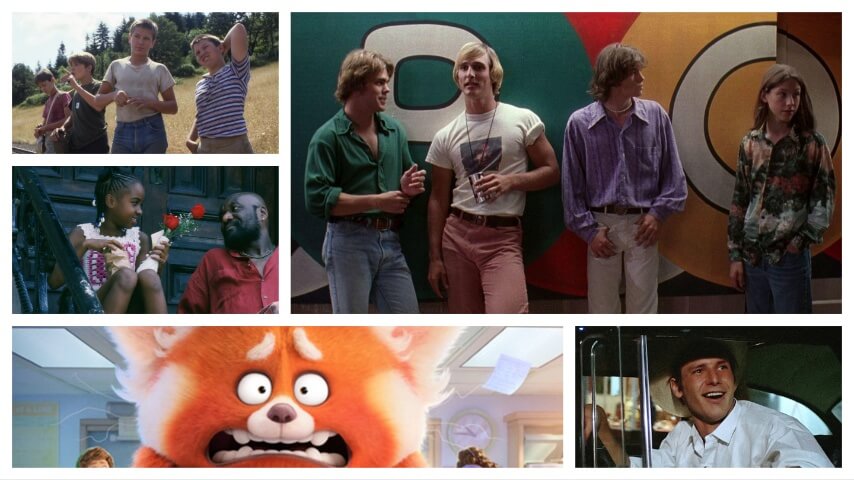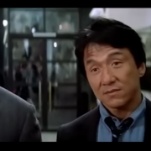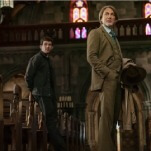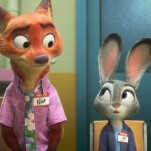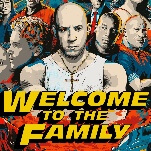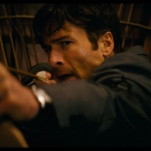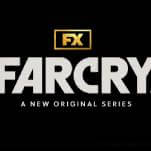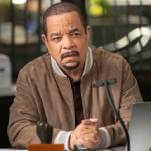1965—as remembered by Moonrise Kingdom (2012)
Another auteur-driven coming-of-age film set in the mid-60s about orphan autonomy resolved with institutional childcare, Wes Anderson’s sweetest film pairs two of the director’s best child performances (Jared Gilman and Kara Hayward) with a mission of adventure, love, and resistance from the constrictions of their island community. This is what counterculture looked like off the coast of New England. Moonrise Kingdom is as arch and ironic as your typical Anderson movie, but with an added edge of fantasy and preciousness—constantly aware of the slippery, transient nature of both this young romance and how it’s remembered.
Judy Blume’s classic 1970 novel was not nostalgic, but urgently contemporary. It charmingly and shrewdly identified the difficulties of early adolescence in an increasingly secular and economically-shifting America—many felt the country was taking steps to grow up just like the book’s titular preteen. It took nearly 50 years for Blume to agree to a film adaptation, and director Kelly Fremon Craig had the unenviable task of capturing the immediacy and realism of Blume’s book 50+ years after the fact. Thanks to an ensemble of practically glowing performances, all the key concerns of Blume’s novel are translated intact; it’s not a nostalgic film, rather one concerned about what has endured in the female adolescence experience.
1973—as remembered by Crooklyn (1994)
We’ve now hit the point of our list where films are set after our first entry was released—time is funny like that. Spike Lee’s semi-autobiographical account of a Bed-Stuy summer was co-written by his siblings, and the multiple closely-linked screenwriters contribute to the film’s noisy, stream-of-consciousness style, which proves advantageous to Lee’s depiction of a seven-person Black family in a charged neighborhood of brownstones. Crooklyn features the usual hallmarks of coming-of-age autofiction: back-to-back needle-drops, profound alienation outside the household, and poignant glimpses of struggling parents (a never-better Alfre Woodard and Delroy Lindo). Lee’s film rises in overheated and trembling volume throughout, feeling eerily close to a group of grown-up siblings shouting memories over each other and hitting upon hard family truths in the process.
1976—as remembered by Dazed And Confused (1993)
Like American Graffiti before it, Dazed And Confused gives an ensemble, one-night glimpse into a mass threshold-crossing moment set in the filmmaker’s neck of the woods. The laid-back, shaggy-haired musings of the last day of school in Austin, Texas are tinged with missed opportunities and pithy philosophy, an equal mix of despondency and liberation that was gifted to the estimated one hundred young actors (including Ben Affleck, Milla Jovavich, Parker Posey…) for Linklater’s personal-but-collective film. It’s difficult to tell who a film like Dazed And Confused belongs to—a lot of the characters were workshopped and altered by their performers, even if they didn’t grow up in the time the film is set. It’s what gives the film a sort of timeless quality, suggesting the American Teenager is a perpetual concept unfixed in 20th century history.
Mike Mills based his breakout film Beginners on his father having come out of the closet during his twilight years. His follow-up film turned to his mother, telling a fictionalized account of a spirited woman raising a teenage boy with a found family of young women in Southern California. Central to the film, which surveys different generations of SoCal women from a curious and impressionable male perspective, are motifs of fertility and contraception that took center stage in ‘70s American life, as sexual agency and interpersonal kinship starts defining these women’s (and man’s) search for fulfillment. It’s a perfect moment for a filmmaker to look back on: all the characters are burnt out from tiresome journeys or sit on the precipice of new horizons.
Richard Linklater followed the Academy Award-winning success of Boyhood with a spiritual successor to Dazed And Confused, a bromance hangout movie set during the induction week of a Texan college in the fall of ‘80. Starring up-and-comers like Glen Powell, Zoey Deutch, Tyler Hoechlin, and Wyatt Russell, Everybody Wants Some!! operates on a policy of being as loose and unimposing as it can be, enjoying the good vibes of an off-campus baseball house. In true 1980 Texas fashion, these dazzling men care more about looking good for a night out than the night itself, and no-one checks whether everyone in their house is actually matriculated. Linklater graduates from the ‘70s with a rollicking wave of good vibes—as if he’d do it any other way.
1981—as remembered by Wet Hot American Summer (2001)
Ostensibly a parody of summer camp movies of the very early ‘80s, this cult classic is much more interested in pastiching the way films like Meatballs and Summer Camp presented an artificial fantasy of youth when they came out. Expect jarring needle drops, insane hair, and tiny, tiny shorts—this enduring comedy is less about looking back nostalgically at the early ‘80s and more about pointing out how ludicrously the early ‘80s looked at itself. Like other ensemble films on this list, the cast contributes to a patchwork of conflict and joy, and the fact that some of them are stunningly deranged further demonstrates how insincerely the summer camp genre reflected life for the younger generation.
1982—as remembered by Son Of Rambow (2012)
Back in early ‘80s England, you could take a video camera and tripod into a matinee screening of Rambo: First Blood and just record the whole damn thing. If you did, you might turn the world of an 11-year-old Plymouth Brethren boy upside-down. Garth Jennings’s loving ode to making movies as a kid is dripping in era-specific details, not limited to: abusive teachers, general lacks of supervision, and the allure of French exchange students in a small-town school. The most affecting period detail comes in the widespread antagonism towards underachieving underprivileged kids, a symptom that originated before 1982 and has continued long after it, but the vileness of the classist Thatcher years certainly emboldened it.
1984—as remembered by Boy (2010)
The seeds for Taika Waititi’s mega-blockbuster success lie in his early dramedies, and this throwback to the aspirations and disappointments of a childhood with absent parents taps into a pathos that is evident in all the director’s work since. Set in mid-80s Tairāwhiti Gisborne, a Michael Jackson-obsessed Māori boy spins wild fantasies of his distant father, half to impress his friends and half-hoping they’ll come true. When his father returns (Waititi, channeling a terrific blend of bravado and patheticness), fantasy and reality collide—and in the isolated New Zealand community, the truth behind the boy’s coping strategy/imagination hits incredibly hard. It’s not just nostalgia that tints how we reflect. Sometimes we warp reality while it’s happening to us.
1985—as remembered by Sing Street (2016)
Eight years since it premiered, it’s clear that this Dublin-set coming-of-age musical replaced John Carney’s previous film Once as the most enduring and appealing Irish musical of modern times. Sing Street transports us to inner-city Dublin, where young Conor’s arrival at a Christian Brothers school kickstarts his student-led band, all so he can impress his older crush. With toe-tapping original numbers and a nimble examination of difficult family life, Carney channels the hopeful/hopeless yearning of teenage pop into a hometown rife with conflict and poor prospects.
1987—as remembered by Adventureland (2009)
Superbad director Greg Mottola made a considerably smaller splash with his follow-up Adventureland, which looked at the slower and more mundane amblings of a theme park worker stuck in the quagmire between college and adult life. The film has a winning pair of leads with Jesse Eisenberg and Kristen Stewart as colleagues navigating a gray zone of infidelity, insecurity, and financial instability, localized in a Pennsylvania adventure park community that engenders both immediacy and estrangement from day to day. A great film about looking back and hyper-fixating on lots of little things you didn’t do right.
1988—as remembered by Donnie Darko (2001)
Have you ever considered that the capitalist social structure of the late ‘80s caused a lot of ennui? Angst drips over our dimension and others in Richard Kelly’s cult classic, as thoroughly despondent teenager Donnie spits immature insults at religious life coaches (played by Patrick Swayze, perfectly weaponizing his own late ‘80s charm) and drowns in a suburban prison until he is tasked with saving the world in the most cynical, existential emo-fantasy way possible. It’s a credit to Kelly’s ingenuity that Donnie Darko’s power/sacrifice fantasy is so enduring; despite the Tears For Fears and Joy Division on the soundtrack, the morbid way Donnie saves the world reflects the shallow, bitter way teens have seen the world around them for decades.
1991—as remembered by Janet Planet (2023)
Not the first nor last time summer camps appear on this list, Annie Baker’s portrait of heartrending codependency begins with our young protagonist insisting she’ll kill herself if her mom doesn’t take her home. The stability of 11-year-old Lacy and her single mother Janet is perennially turned over and examined throughout the film, as Baker lets us see a relationship through the lens of the partners and friends that Janet attaches herself to, who in turn become Lacy’s window into the world beyond her mother. The regional, isolated location of the film cuts it off from a lot of 1991-specific details, except for an insular New Age agrarian commune led by Elias Koteas whose general acceptance in the local community feels very accurate to the retro, rural feel of the film.
Despite being adapted and directed by the author of the book it’s based on (they let you do that?!) The Perks Of Being A Wallflower is actually good. In its portrayal of a lonely teen living with swallowed trauma and confused grief in the early ‘90s, author/screenwriter/director Stephen Chbosky injects our casually hurtful and sporadically nurturing teen relationships with acute psychological sensitivity. The film was looking back further than the novel (Chbosky’s novel was published in 1999), but early ‘90s Pittsburgh is still draped in a wistful, yearning energy in no small part due to a soundtrack of wall-to-wall bangers.
Of the two awards-friendly indie dramas about queer conversion camps released in 2018, Cameron Post wins out over Joel Edgerton’s Boy Erased, with Desiree Akhavan bringing a vibrant, uncertain energy that underlines the tragedy of places like this and makes the characters’ fight for liberty feel more vital. Conversion camps have been in operation before and after the film’s 1993 setting, but the pre-internet, pre-cellphone status quo means that the isolation feels sharp and the micro-community that the queer, BIPOC characters establish within the camp’s boundaries feels all the more necessary.
1996—as remembered by mid90s (2018)
The title does indeed check out—1996 is in the mid-90s. Before he become really weird about his therapist to the point of muddying their professional relationship with a biographical documentary, Jonah Hill debuted as a filmmaker with this slice-of-life skateboarding drama, where Katherine Waterson is completely exasperated for the best part of 80 minutes about her teenage son hanging out with a friendly group of older skaters. There’s an affecting bluntness to how Hill restages the difficulty of suburban L.A. home life, where older siblings treat you like a punching bag, people drive when they shouldn’t, and alarming behavior isn’t treated as gravely as it probably should.
2002—as remembered by Turning Red (2022)
Welcome to the 2000s! One of Pixar’s more winning films of the past decade looked at a unique puberty for an Asian Canadian girl—turning into a giant red panda whenever she gets too animated. No, the film did not acknowledge the global event of the September 11th attacks, but the gleeful insistence on featuring the type of teenage music, style, and vernacular that makes our older versions cringe proves a useful weapon in getting us invested in the story of teenage becoming. Yes, this young girl/red panda is cringe, but she is also free.
2003—as remembered by Lady Bird (2017)
Sacramento got its Big Hollywood Moment in Greta Gerwig’s affecting coming-of-age film charting the final high school days of Lady Bird (Saoirse Ronan, it’s the titular role) in a family under financial and interpersonal strain. Lady Bird spends the whole film trying to craft meaning and beauty out of the boredom of her sun-soaked town, falling for misleading boys and getting on her mom’s last nerve. As Lady Bird’s mother, Laurie Metcalf delivers perhaps the greatest put-upon parent in a coming-of-age film, treating her daughter with a level of scrutiny and confusion that veers between valid and unfair as the two women learn how best to love each other. Lady Bird looks back at a difficult reality of small-town American life with a nostalgia tinged with melancholy, trying to recollect how our parents must have felt when we were acting up the most.
2008—as remembered by Dìdi (2024)
We’re going to need to re-calibrate the cringe-o-meter for this one, guys. Filmmaker Sean Wang so faithfully recreates the middle-school goofs and faux pas of the first generation to grow up with social media and YouTube with such pinpoint accuracy that it’s almost lethal. Joan Chen steps up as the put-upon mother in charge of two Taiwanese-American teens who might as well be from different planets, so alien are their social experiences from each other. Young Chris edits YouTube compilations, insults friends to curry social favor, and is blatantly excluded from digitally-arranged plans. In telling the boy’s graduation into high school, Wang identifies how quickly the internet regenerates into unrecognizable states—the ways a teen uses the internet in 2008 now seem encased in amber, a perfectly antiquated specimen with which we can examine the alienation they delivered to an entire generation.
